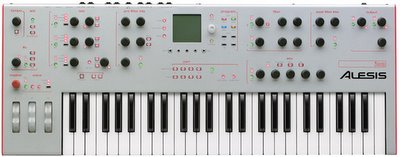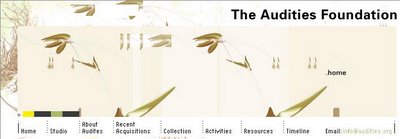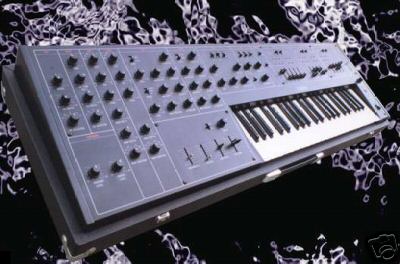There has been some discussion on AH on the Alesis ION filter types. It's interesting that they are not listed in detail on the Alesis site. I thought I'd put up a post with the list so far. Title link takes you to a Sound on Sound review of the ION where the majority of the below came from. However, some new filters also listed below, were added since the SOS reveiw. Here's
a link to the details on the OS updates to date.

'mg': a four-pole low-pass modelled on that of the most famous monophonic analogue synth ever made.
'ob': a two-pole low-pass closely resembling the one in a classic synth xpander... whoops, I mean expander module.
'ob': a two-pole band-pass.
'ob': a two-pole high-pass.
'rp': a four-pole low-pass modelled on the one in a popular semi-modular synth.
'tb': a three-pole low-pass (think 'little silver bass synth').
'jp': a four-pole low-pass (from an eight-voice synth noted for its coloured buttons amongst other things);
'Eight-pole low-pass': all the filters from here on were created for the Ion; this one gives a very steep cutoff.
'8ve dual band-pass': two two-pole band-pass filters spaced one octave apart.
'six-pole band-pass': like an exaggerated version of the 'ob' band-pass.
'phase warp': an analogue phaser effect based on eight all-pass filters in series.
'comb filter 1': multiple resonant peaks and notches which are not harmonically related.
'comb filter 2': as above, but the signal is additionally filtered to warm up the sound.
'vocal formant 1': three band-pass filters emulating 'ah' and 'oo' vowel sounds.
'vocal formant 2': as above, but 'oh' and 'ee' vowel sounds.
'vocal formant 3': a five-band formant filter.
'band limit': a two-pole high-pass filter and a two-pole low-pass filter in series, limiting the signal to everything between them; resonance adjusts bandwidth.
New Types:
'OP 4-Pole Highpass - This filter is based on our "MG" 4-pole lowpass filter model. It has a steeper cut-off and more extreme resonance than the "OB" highpass. Like the "MG", it will self-oscillate when the resonance is turned all the way up. It can thus be used as a fourth (or fifth) oscillator.
'Comb 3 - Based on a different design than Comb's 1 and 2, it has deeper notches and more pronounced resonance.
'Comb 4 - Similar to Comb3, but with negative feedback. This will oscillate and even clip when the resonance is turned up.





















































